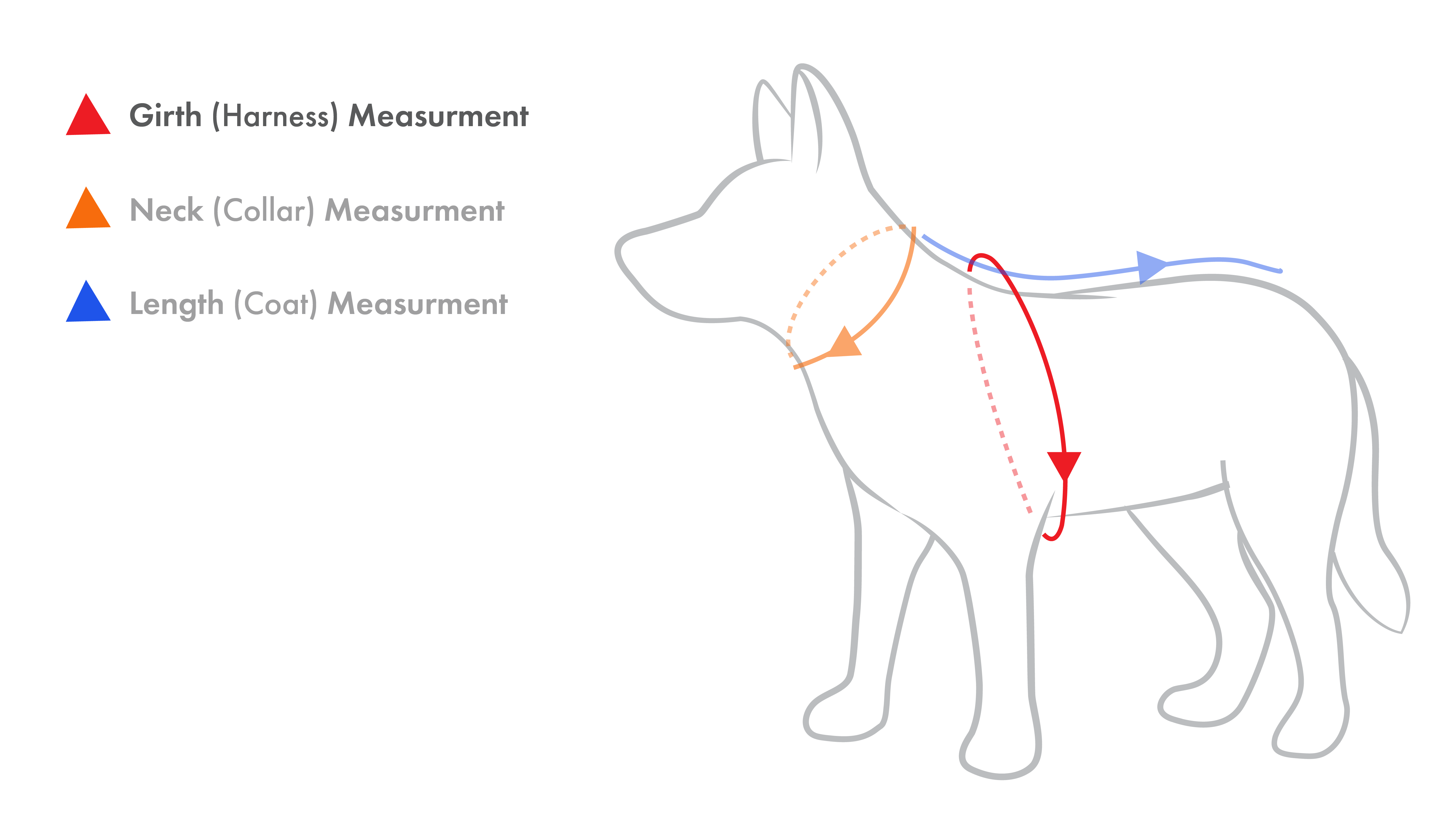
How to Measure Dog Chest for Harness - Essential Harness Guide
A harness that fits just right is more than just a piece of gear — it’s the difference between a safe, comfortable walk and one filled with frustration. A poorly fitted harness can cause rubbing under the legs, restrict natural movement, or even lead to injury. That’s why learning how to measure your dog’s chest for a harness is essential.
Harnesses are often preferred over collars because they:
-
Distribute pressure evenly across the chest, reducing strain on the neck and throat.
-
Prevent choking, especially for pullers or smaller breeds with delicate tracheas.
-
Offer better control, making training and daily walks smoother and safer.
At EzyDog, we design harnesses with your dog’s comfort and safety at the centre. Our gear combines durability, ergonomic design, and thoughtful features built for both everyday strolls and big adventures. In this guide, I’ll show you step by step how to measure your dog properly — so you can choose the perfect EzyDog harness for your furry mate and enjoy every walk together.
Choosing the Right Harness for Your Dog
Not all dogs are the same, and neither are their harnesses. The right fit depends on your dog’s breed, body shape, activity level, and lifestyle.

Essential Chest Plate Harness
Its ergonomic EVA foam chest plate moulds to your dog’s shape
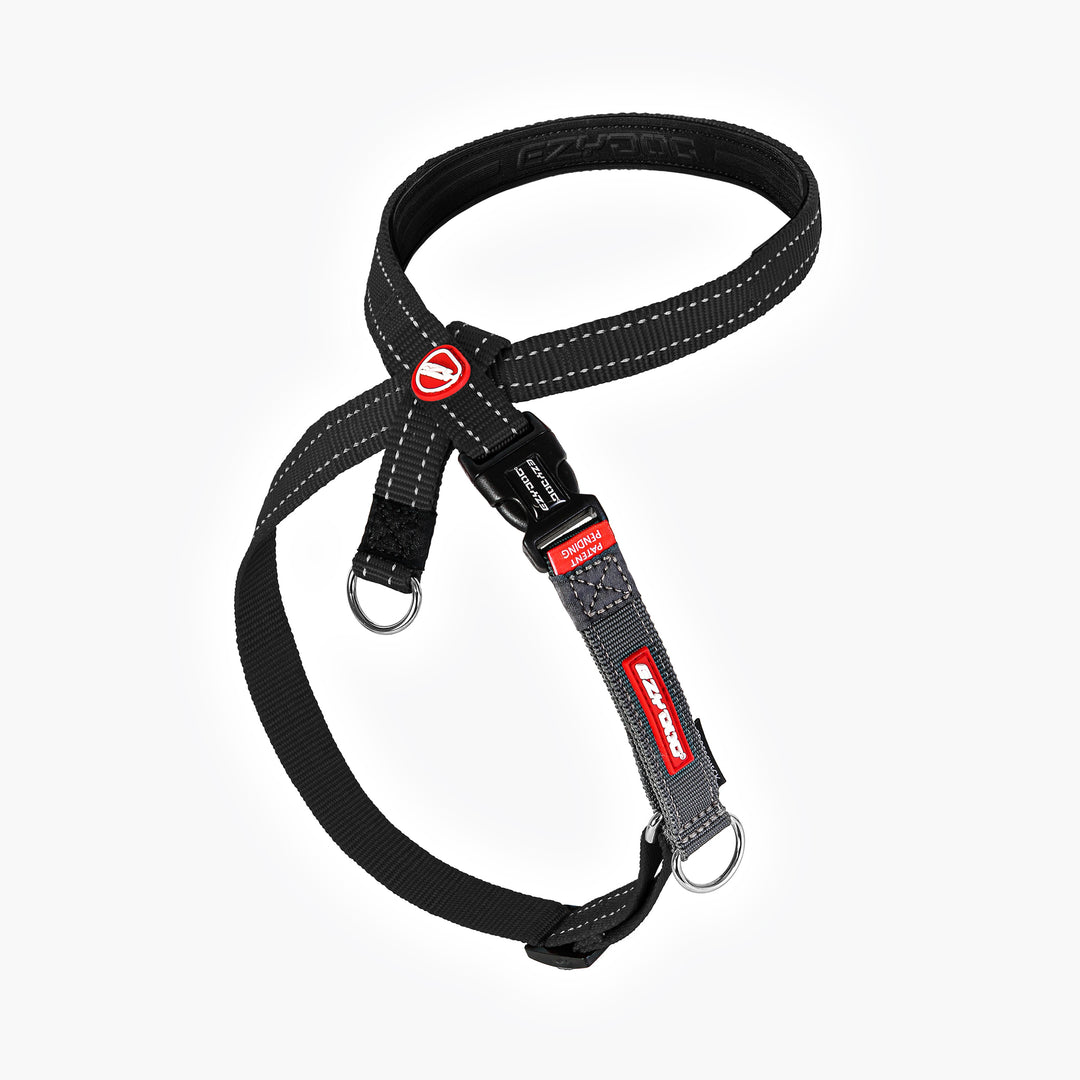
Crosscheck Harness
Figure-8 system that guides dogs back towards you without pressure on the throat
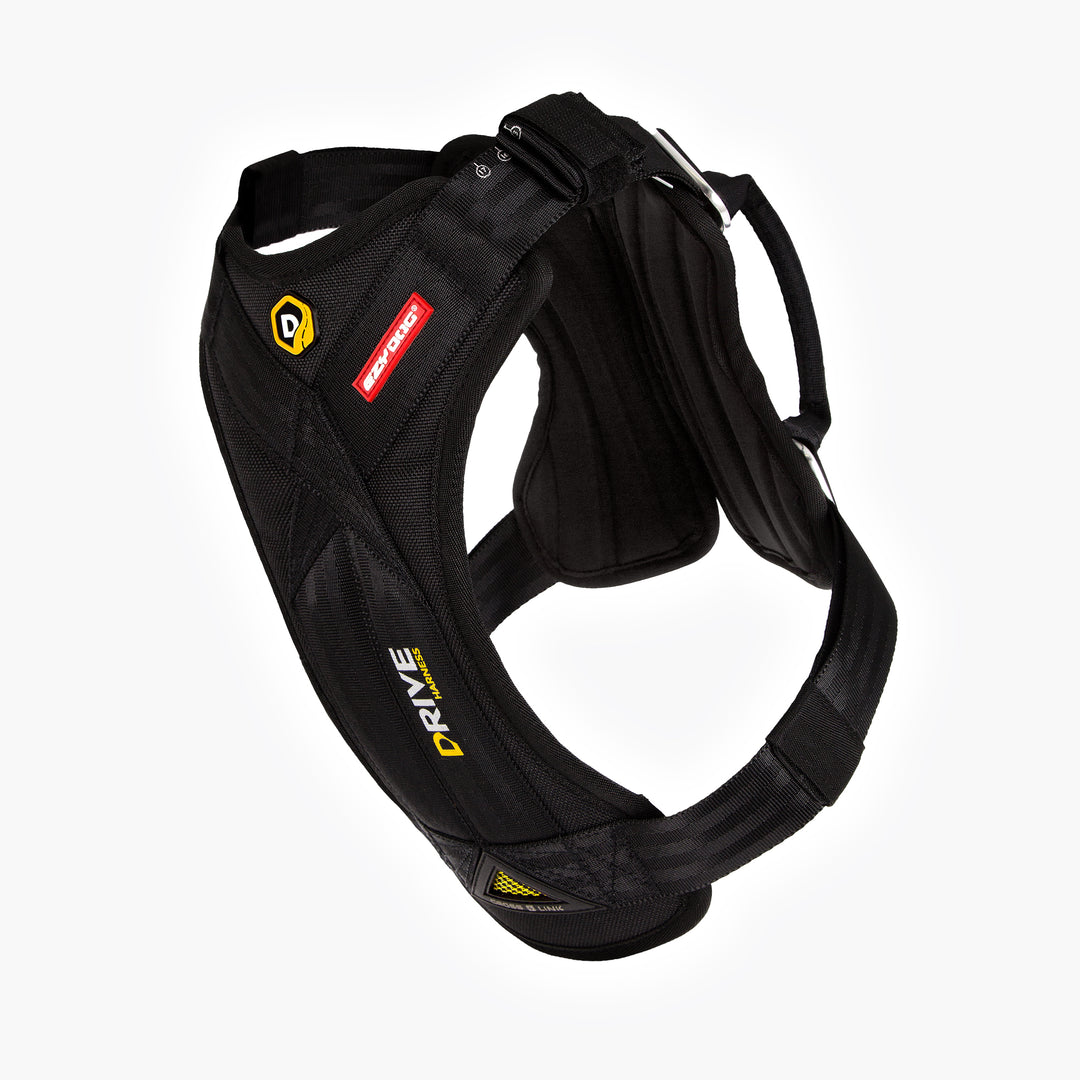
Drive Dog Car Harness
Doubles as a crash-tested car restraint and a durable outdoor harness
Tip: If you’re not sure which type to choose, think about your dog’s “main job” on walks — are they a cruiser, a puller, or an adventurer? Matching style to activity ensures comfort and control.
TL;DR — Quick Sizing Answer
To measure your dog for a harness:
-
Chest girth: Wrap a soft tape around the widest part of the chest, just behind the front legs.
-
Neck circumference: Measure around the base of the neck, above the shoulders.
-
Fit should be snug, not tight — use the “two-finger rule.”
When in doubt, cross-check your measurements with our product size charts.
Tools You’ll Need
-
Soft tape measure (or string + ruler).
-
A notepad/phone to record measurements in cm and inches.
-
Optional: A helper and a few treats to keep your dog calm and standing still.
Step-by-Step: How to Measure Your Dog for a Harness
1) Measure Chest Girth (the most important number)
Have your dog stand naturally. Wrap the tape around the ribcage, just behind the front legs at the widest point. Keep the tape snug but not tight — you should fit two fingers between tape and body.
Tip: For deep-chested breeds like Whippets or Greyhounds, make sure you’re measuring at the deepest point, which may sit further back.
2) Measure Neck Circumference
Place the tape at the base of the neck, just above the shoulders where a collar would sit. Again, keep it snug with two fingers’ space. This ensures no pressure on delicate throat tissues.
3) Optional: Back Length
For vest-style harnesses, measure from the top of the breastbone down to the girth strap position. This prevents straps rubbing near the armpits.
4) Record and Cross-Check
Note measurements in both cm and inches. If your dog is between sizes, size up and adjust straps. Growing puppies benefit from adjustable harnesses.
5) Compare to Our Size Charts
Use chest girth as the priority when checking against the EzyDog size charts. The right girth ensures secure, comfortable fit.
Fit Check: Adjusting for Comfort and Safety
Before that first walk, run through this three-point check:
A) The Two-Finger Rule
You should be able to slip two fingers between the straps and your dog’s body. Too tight causes rubbing; too loose means slipping.
B) Strap Placement
-
Bottom strap: sits comfortably behind the front legs, on the ribs.
-
Chest strap: across the chest, not riding up on the throat.
-
Straps should not block shoulder movement.
C) Walk Test
Take a 5–10 minute stroll. Look for shifting, coughing, or restricted movement. Adjust straps evenly if needed. Re-check weekly — dogs’ weight and coat can change fit over time.
D) Extra Security (Optional)
For escape artists, clip your leash to both the harness and an EzyDog collar. This backup keeps walks stress-free.
Choosing the Right Harness Type (Match Style to Dog and Activity)
Everyday Comfort
For casual walks, a padded, ergonomic harness with adjustable points keeps your dog cool and comfy. Browse our everyday harness collection.
Training and Pull Control
For training sessions, a front-clip option paired with positive reinforcement helps teach better lead manners. Remember, gear supports training — it doesn’t replace it.
Car and Travel Safety
A crash-tested travel harness like the Drive™ keeps your dog secure in the car. Explore our dog travel safety gear.
Visibility and Night Safety
Harnesses with reflective stitching or bright colours keep walks safe after dusk. Add safety gear for extra visibility.
Size Chart Example
|
Size |
Neck (cm) |
Chest Girth (cm) |
|
XS |
27–46 |
29–48 |
|
S |
34–56 |
37–60 |
|
M |
41–68 |
45–73 |
|
L |
46–78 |
49–84 |
|
XL |
52–90 |
56–97 |
|
2XL |
74–131 |
77–134 |
Always cross-check the specific product for exact sizing.
Body Shape Notes
Deep-Chested, Narrow-Neck Dogs
Breeds like Whippets and Dachshunds need adjustable fronts to prevent straps riding too high.
Stocky, Wide-Chest Dogs
Bulldog-shaped bodies need wider neck openings and straps that avoid soft tissue.
Long-Coat or Fluffy Dogs
Measure close to the skin, not over the coat. Re-check fit after grooming.
Puppies and Adolescents
Re-measure monthly. Choose harnesses with generous adjustment and lightweight hardware.
Harness Care and Maintenance
-
Cleaning: Hand wash in mild soap, rinse, and air dry. Many EzyDog harnesses use quick-dry materials.
-
Inspection: Check stitching, buckles, and webbing every few weeks. Replace if damaged — a safe harness is a strong harness.
Frequently Asked Questions
How often should I measure my dog for a harness?
Puppies: measure monthly. Adults: every 6–12 months, or after any weight or coat changes.
Can a harness hurt my dog?
Not if fitted properly. Discomfort, chafing, or irritation usually come from poor sizing or incorrect adjustment.
What if my dog is between sizes?
Always size up, then adjust the straps for a secure but comfortable fit.
Can my dog wear a harness all the time?
No. Use a harness for walks, outings, or training. Remove it at home to prevent irritation or tangling.
How do I know if the harness is too tight or too loose?
Use the two-finger rule. If you can’t fit two fingers, it’s too tight. If you can fit more than two, it’s too loose.
The Bottom Line
A properly fitted harness transforms your walks. It keeps your dog safe, comfortable, and under gentle control — while giving you peace of mind. Now that you know exactly how to measure your dog, you can confidently explore the full range of EzyDog harnesses and find the perfect match.
Walks should be about joy, not gear struggles. With the right fit, every outing becomes the adventure it’s meant to be.


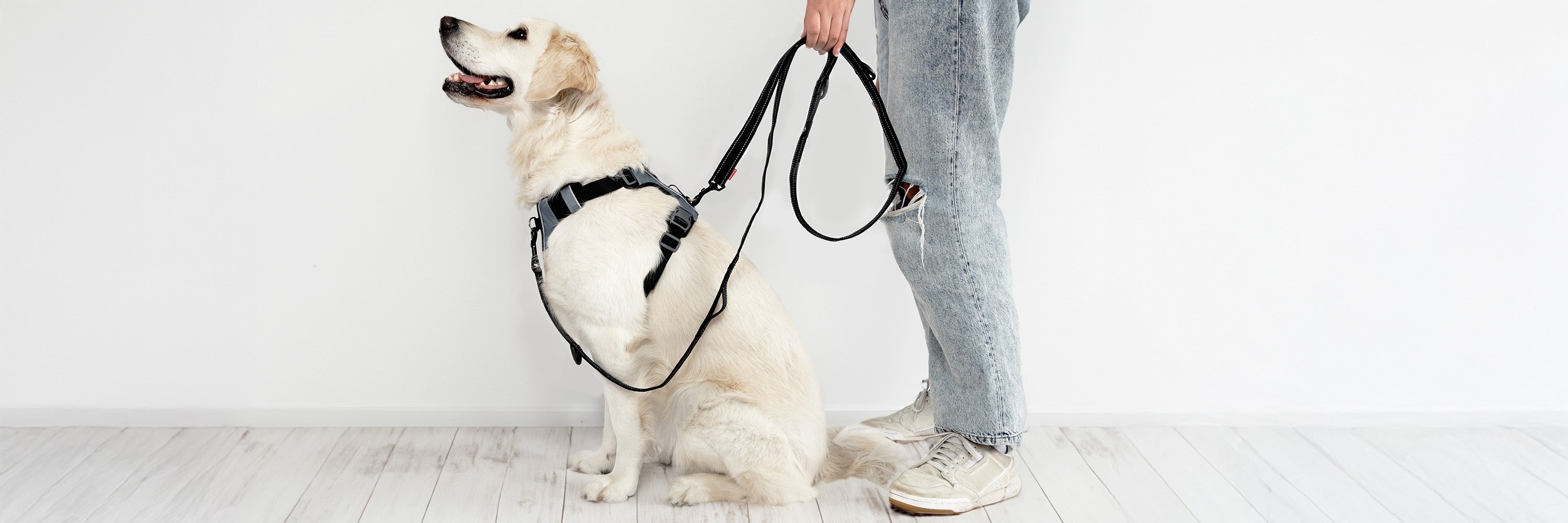
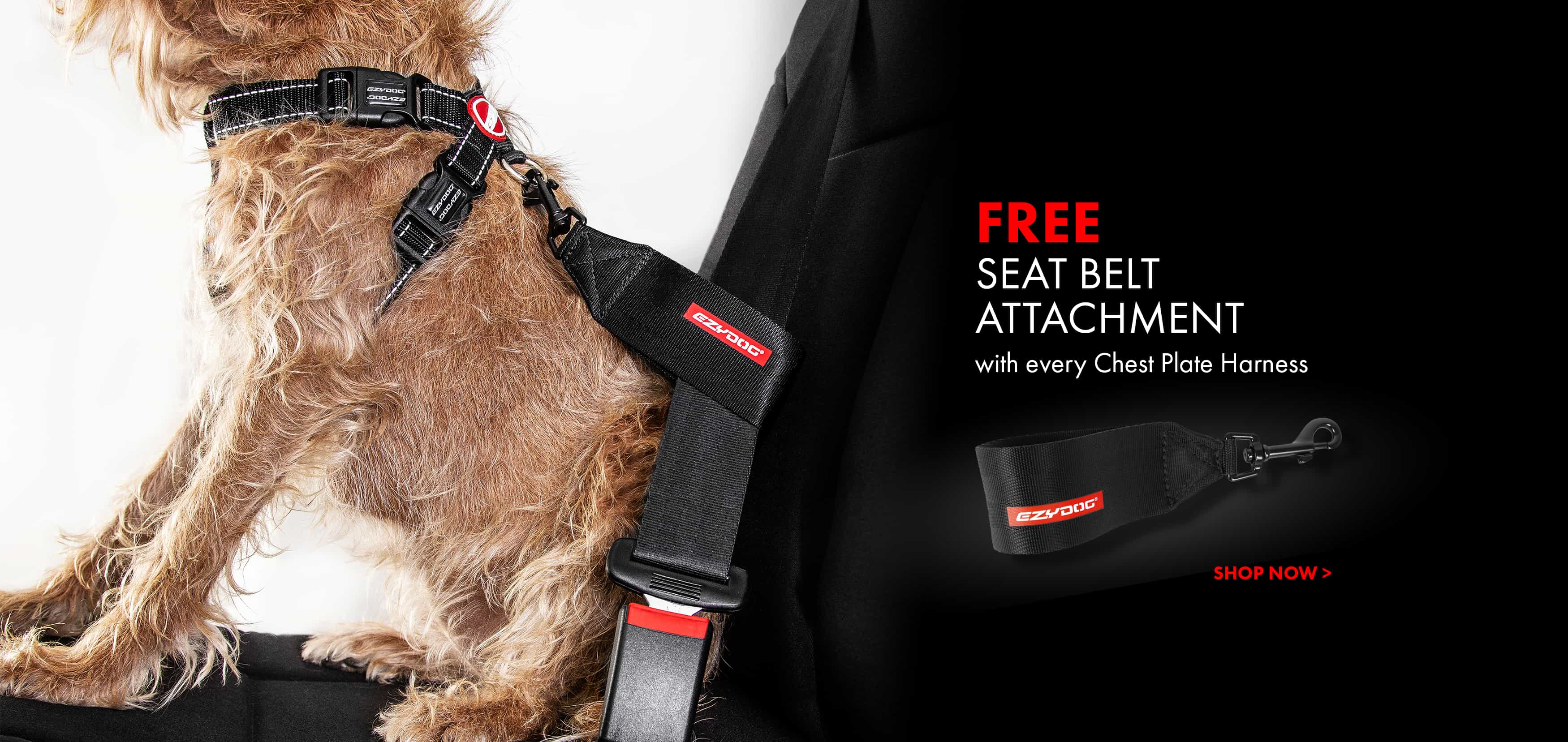
Leave a comment
This site is protected by hCaptcha and the hCaptcha Privacy Policy and Terms of Service apply.